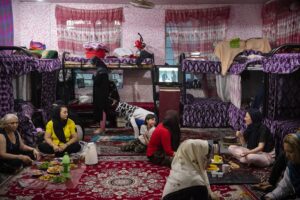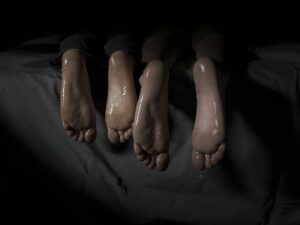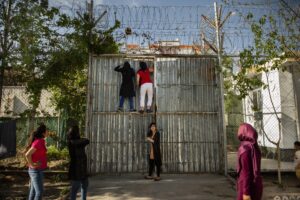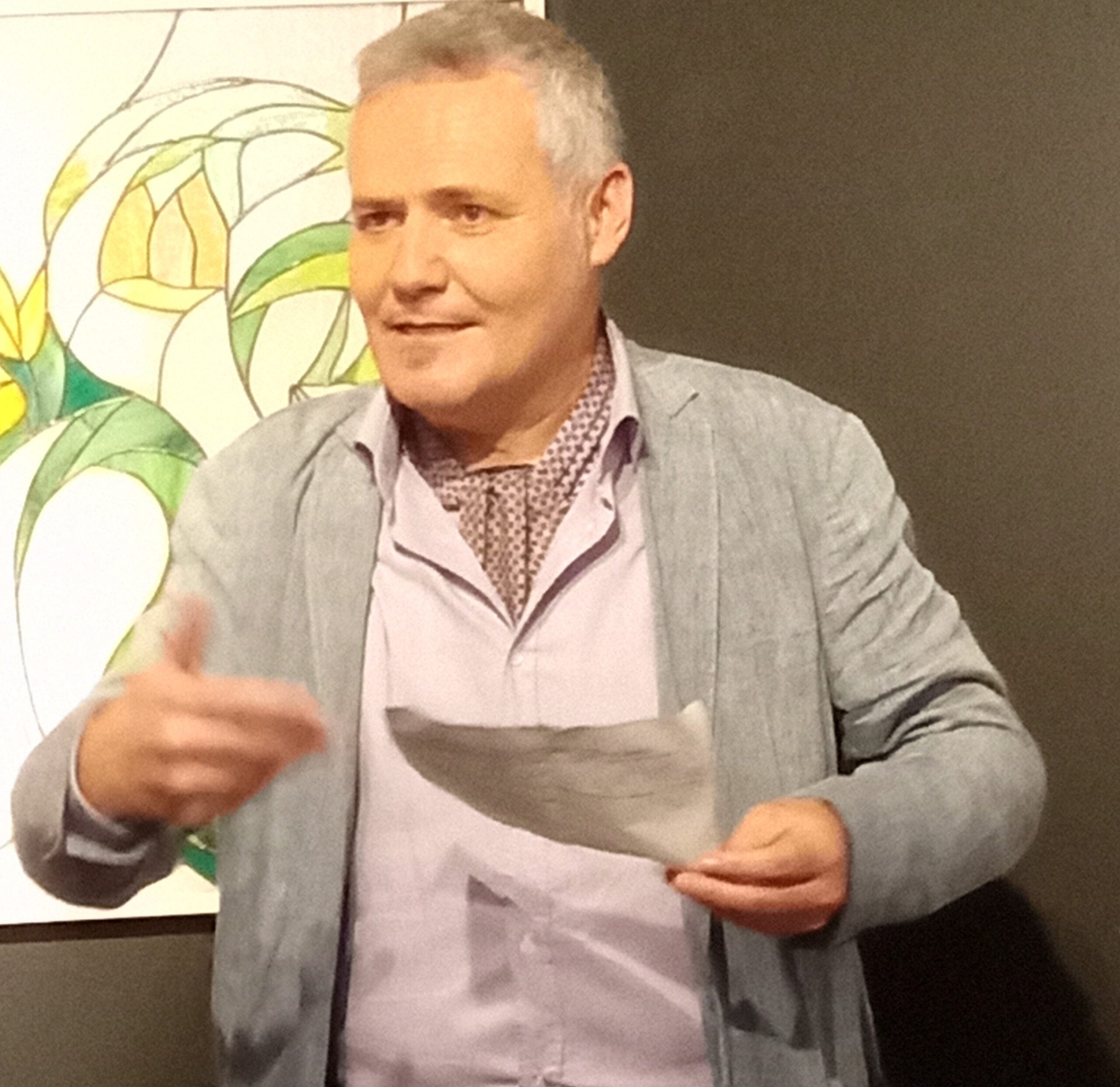The third edition of the Mantua Women’s Photography Biennal, curated by Alessia Locatelli and organized by La Papessa Association, opens with two prison investigations, one strong, the other even a little poetic. In fact, the photographic investigation hosted at Casa del Rigoletto is an incredible multi-voiced prison testimony with the unequivocal title of “Where Prison is Kind of Freedom”: the Iranian-Canadian reporter Kiana Hayeri stands in solidarity with some inmates of the Afghan prison in Herat. We are some time before the recent return of the Taliban to power and the photographer allows us to know the stories of women who rebelled against family abuse and domestic violence by killing their husbands. Therefore, a structure that has barbed wire and high walls as its border can even become a small, tiny bubble of freedom. At Casa del buffone verdiano there is a second exhibition which, as mentioned, has some dreamlike elements: “Photo Requests from Solitary”, which is specifically an American project that tries to alleviate the harshness of the penitentiary by crossing a volunteer photographer with the desire of the inmates and prisoners to have an image of the outside world.

Kiana Hayeri, “Herat Afghanistan”, 5.26.2019, courtesy Biennale Fotografia Femminile di Mantova
The central place of the Festival, however, is Casa del Mantegna, where the homage to the hundred years since the birth of the artist Lisetta Carmi is magnificent, with two series of photographic portraits which show the Sardinian women in 1964 and the Sicilian ones in 1977. The harshness of the daily life conditions, the heaviness of the social and cultural climate are counterbalanced by some poetic and aesthetic elements (above all the vital essence of the empty chairs in a famous shot of Palma di Montechiaro) and above all the evidence that the island women portrayed by Lisetta Carmi, despite the black robes that cover them, are illuminated by the bond of pride woven with those remote places. The beautiful fifteenth-century building also hosts a project by the Iranian photographer Newsha Tavakolian, which is not focused on today but uses the past to talk to us about the contemporary. “And They Laughed at Me” is in fact a series of negatives from a few decades ago which, starting from a woman smelling a rose, puts photographic errors and poorly executed prints back into circulation to reiterate that the struggle of Iranian women is not a recent event, but has its roots in at least four decades in which the alternative has always been to disappear swallowed up by the gloomy chador or to walk in the direction of hope.

Newsha Tavakolian, “And They Laughed at Me”, 2023, courtesy Biennale Fotografia Femminile di Mantova
Already seen at the Lodi Ethical Photography Festival in autumn 2023, we find the “Imilla” project by Brazilian photographer Luisa Dörr. The project shows us the recovery of an ancient tradition of the Bolivian city of Cochabamba conjugated to the feminine: the use of a wide skirt called “pollera” with which the local girls “surf” with skateboards, thus reclaiming a playful sense of freedom and inclusion. Sixty million human beings literally live underground: they are, among others, climate refugees, miners, members of apocalyptic sects, native communities. Chilean photographer Tamara Merino reveals it to us with a very interesting project, taking us into caves that are more or less furnished and lived in all day by those who cannot or do not want to live in daylight. Some are therefore forced to choose the cavities as a domestic refuge, others want to choose the cavities to pray and officiate their religious beliefs. Andalusia, Utah and the Tunisian region of Matmata are some of the areas where it is common to find these forms of full-time “Underland”.

Tamara Merino, “Gabriele Gouellain, a German immigrant, waits in the kitchen for her husband to return from mining”, Coober Pedy, Australia, 2015, courtesy Biennale Fotografia Femminile di Mantova
It is militant and effective hand-to-hand with the photographic subject the project by the Californian photographer Cammie Toloui who, in the early 1990s, out of financial necessity, became a stripper in an adult club in San Francisco. Hosted at Casa del Pittore, the thematic series “The Lusty Lady Series” is proposed as a fresco where we see the customers who agreed to be photographed in exchange for the time they were able to spend in front of the transparent glass that separated them from Cammie. The males who accepted the exchange (the women portrayed are rare) do not convey a sense of depravity but of sad and decadent voyeurism. Yes, they have the power and money to observe and drool over a naked woman, but the camera has given greater power to those who use it.

Kiana Hayeri, “Herat Afghanistan”, 4.7.2019, courtesy Biennale Fotografia Femminile di Mantova
There are many other projects hosted in the other locations of this of Women’s Photography Biennial: in at Spazi Arrivabene, the photographic reportages by Sujata Setia and Mahé Elipe are striking, showing us the dark and widespread side of male possession in the negative sense of the female body and the bright of female solidarity and sisterhood. At the Coop Bookshop, the staged project by photographer Olga Stefatou is impressive, showcasing the pride that ‘chrysalides’ (trans women) can claim once they arrive in a first European reception center (in this case, in Greece). Kaleidoscopic is still the proudly ethnic project, hosted at Galleria Disegno, by the Kenyan photographer Thandiwe Muriu with her chameleon-like ‘camouflaged’ models against bright backgrounds and which constitute somewhat of the guiding image of the Festival (the project is entitled “Camo”, precisely from camouflage). And finally, at Palazzo Te, conceptuality, reality and privacy come together in an original project by the Dutch Esther Hovers, which investigates the identity recognition system with the use of surveillance algorithms. “False Positive” also shows artificial intelligence ‘errors’ in reporting suspicious cases of everyday situations such as the abandonment of a suitcase on the sidewalk or the running of two citizens.
Giovanni Crotti
Info:
III Biennale Fotografia Femminile di Mantova
curated by Alessia Locatelli e Associazione La Papessa
08/03 – 14/04/2024
various locations
https://www.bffmantova.com/

I am Giovanni Crotti and I was born in June 1968 in Reggio Calabria to be reborn in June 2014 in Piacenza, the city where I live. My income is guaranteed by digital consultancy, and I then spend it largely on art and letterature: I have been and am a content curator and organizer of cultural events for artists, galleries and institutional spaces, as well as a writer of exhibition reviews, creatives of every era and books.






NO COMMENT